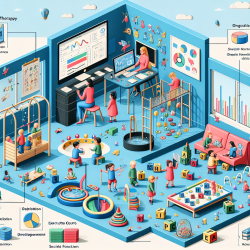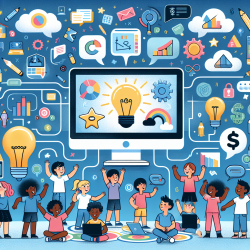At TinyEYE, we are passionate about leveraging cutting-edge research to create the best possible outcomes for children. A recent study titled A protocol for a three-arm cluster randomized controlled superiority trial investigating the effects of two pedagogical methodologies in Swedish preschool settings on language and communication, executive functions, auditive selective attention, socioemotional skills, and early maths skills provides valuable insights that can help practitioners enhance their pedagogical strategies.
This comprehensive study evaluated two distinct pedagogical methodologies—Social and Emotional Material Learning (SEMLA) and Digital Individual Learning (DIL)—in Swedish preschools. The study aimed to determine their effects on children's language development, executive functions, selective attention, socioemotional skills, and early math skills.
Key Findings
- Language and Communication: SEMLA, which emphasizes group-based activities and socioemotional learning, showed significant improvements in children's language and communication skills.
- Executive Functions and Attention: DIL, which focuses on individual digital learning and self-regulation practices, enhanced children's executive functions and selective attention.
- Socioemotional Skills: Both methodologies positively impacted socioemotional skills, with SEMLA showing a slightly stronger effect.
- Early Math Skills: DIL demonstrated more substantial improvements in early math skills compared to SEMLA.
Implications for Practitioners
For practitioners aiming to improve their pedagogical approaches, here are some actionable insights based on the study's findings:
1. Emphasize Group-Based Learning for Language Development
Implementing group-based activities, as seen in the SEMLA methodology, can significantly enhance children's language and communication skills. Encouraging collaborative projects and discussions can create a rich language environment that promotes vocabulary growth and narrative skills.
2. Incorporate Digital Tools for Executive Function Training
Using digital learning tools, similar to those used in the DIL methodology, can be effective in improving children's executive functions and selective attention. Incorporate educational software that focuses on brain training and self-regulation exercises to support cognitive development.
3. Foster Socioemotional Learning
Both methodologies highlighted the importance of socioemotional learning. Create a supportive and emotionally nurturing environment where children can develop social awareness, relationship skills, and responsible decision-making. Activities that encourage empathy, cooperation, and emotional regulation are essential.
4. Tailor Interventions to Individual Needs
The study suggests that different methodologies may benefit different skill sets. Practitioners should consider a balanced approach that incorporates both group-based and individual learning activities to address the diverse needs of children. Tailoring interventions to individual children's strengths and areas for growth can maximize developmental outcomes.
Encouraging Further Research
While this study provides valuable insights, it also opens the door for further research. Practitioners are encouraged to continue exploring and evaluating different pedagogical methodologies to determine the most effective strategies for their specific educational contexts.
To read the original research paper, please follow this link: A protocol for a three-arm cluster randomized controlled superiority trial investigating the effects of two pedagogical methodologies in Swedish preschool settings on language and communication, executive functions, auditive selective attention, socioemo










